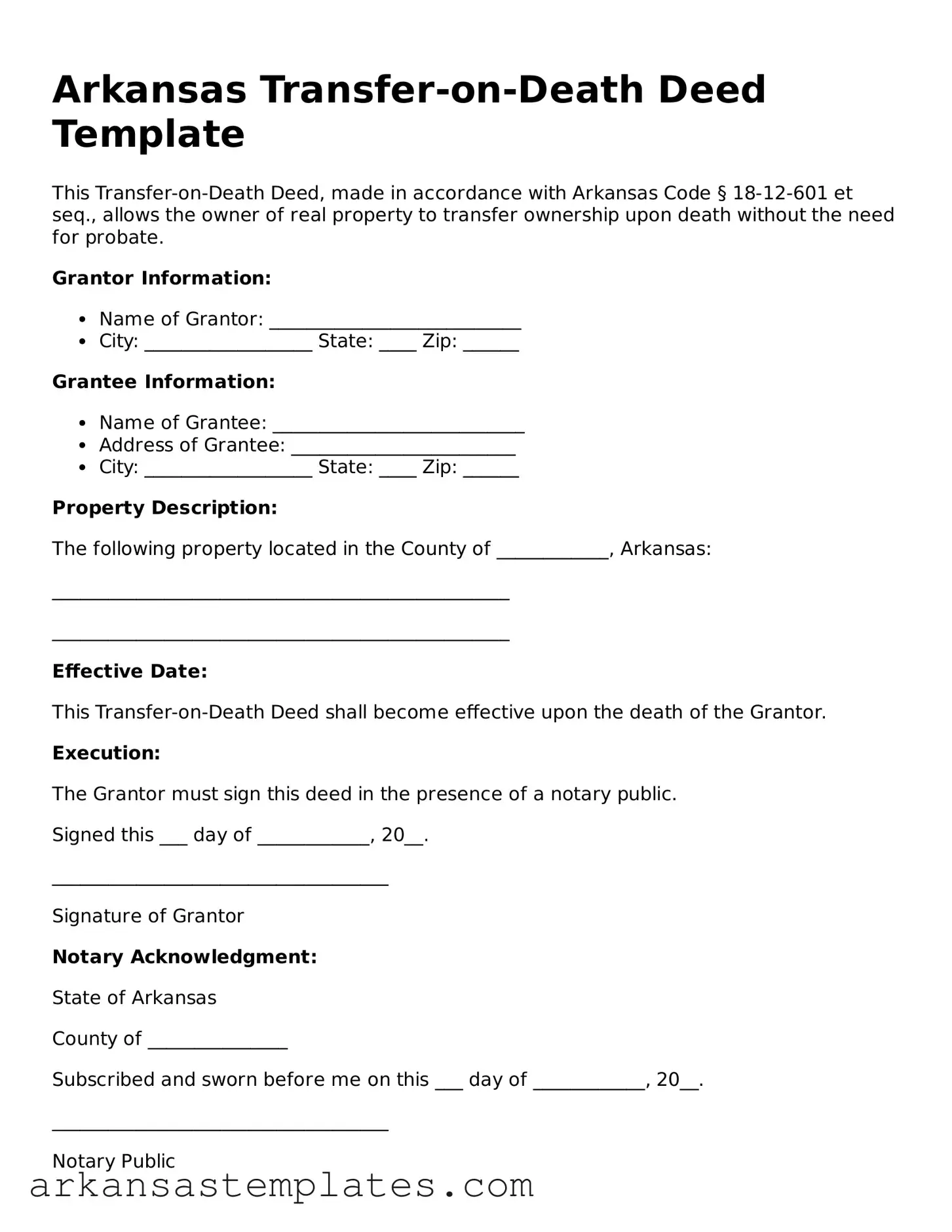Arkansas Transfer-on-Death Deed Template
This Transfer-on-Death Deed, made in accordance with Arkansas Code § 18-12-601 et seq., allows the owner of real property to transfer ownership upon death without the need for probate.
Grantor Information:
- Name of Grantor: ___________________________
- City: __________________ State: ____ Zip: ______
Grantee Information:
- Name of Grantee: ___________________________
- Address of Grantee: ________________________
- City: __________________ State: ____ Zip: ______
Property Description:
The following property located in the County of ____________, Arkansas:
_________________________________________________
_________________________________________________
Effective Date:
This Transfer-on-Death Deed shall become effective upon the death of the Grantor.
Execution:
The Grantor must sign this deed in the presence of a notary public.
Signed this ___ day of ____________, 20__.
____________________________________
Signature of Grantor
Notary Acknowledgment:
State of Arkansas
County of _______________
Subscribed and sworn before me on this ___ day of ____________, 20__.
____________________________________
Notary Public
My commission expires: ________________
